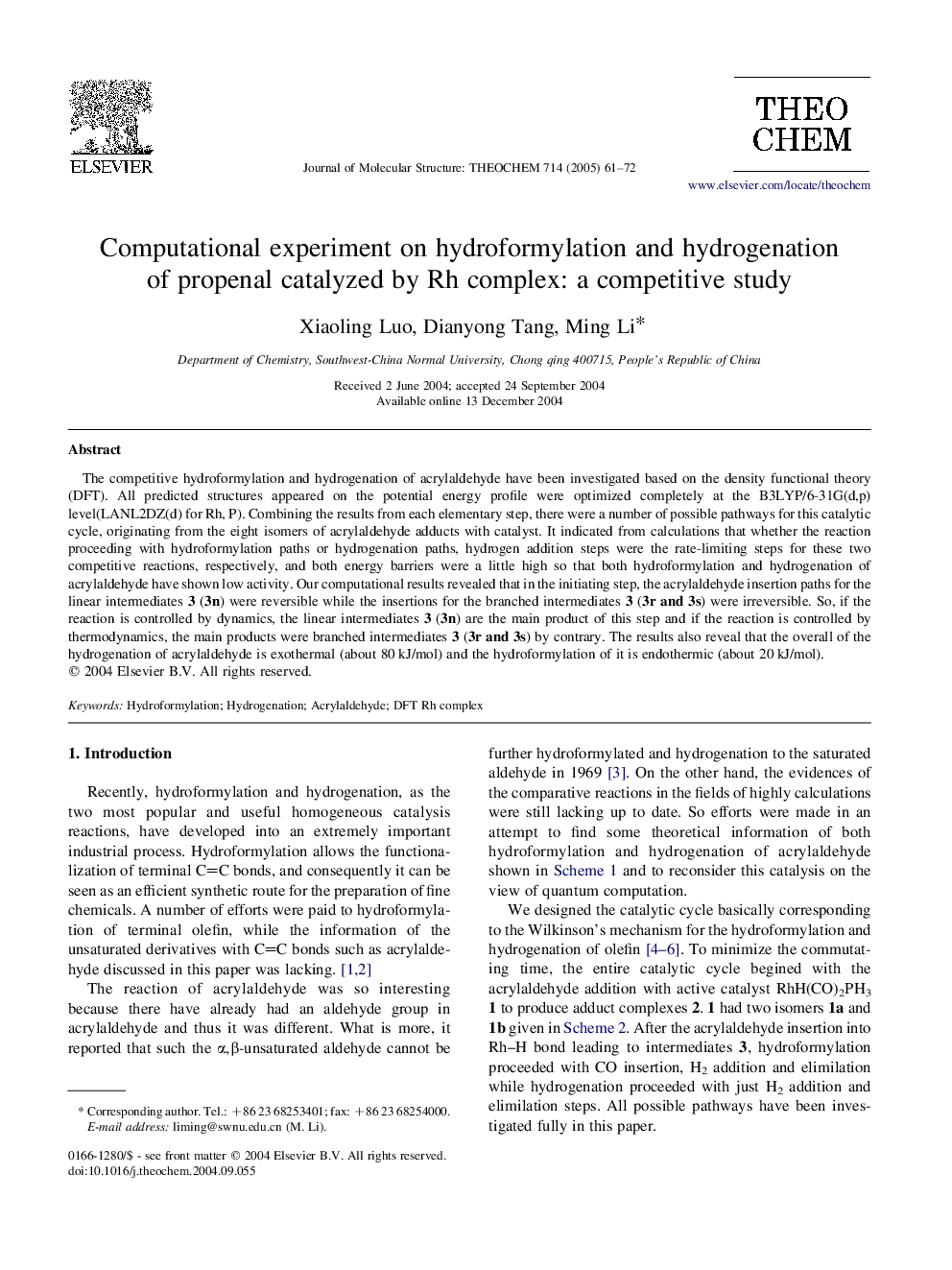| Article ID | Journal | Published Year | Pages | File Type |
|---|---|---|---|---|
| 9592027 | Journal of Molecular Structure: THEOCHEM | 2005 | 12 Pages |
Abstract
The competitive hydroformylation and hydrogenation of acrylaldehyde have been investigated based on the density functional theory (DFT). All predicted structures appeared on the potential energy profile were optimized completely at the B3LYP/6-31G(d,p) level(LANL2DZ(d) for Rh, P). Combining the results from each elementary step, there were a number of possible pathways for this catalytic cycle, originating from the eight isomers of acrylaldehyde adducts with catalyst. It indicated from calculations that whether the reaction proceeding with hydroformylation paths or hydrogenation paths, hydrogen addition steps were the rate-limiting steps for these two competitive reactions, respectively, and both energy barriers were a little high so that both hydroformylation and hydrogenation of acrylaldehyde have shown low activity. Our computational results revealed that in the initiating step, the acrylaldehyde insertion paths for the linear intermediates 3 (3n) were reversible while the insertions for the branched intermediates 3 (3r and 3s) were irreversible. So, if the reaction is controlled by dynamics, the linear intermediates 3 (3n) are the main product of this step and if the reaction is controlled by thermodynamics, the main products were branched intermediates 3 (3r and 3s) by contrary. The results also reveal that the overall of the hydrogenation of acrylaldehyde is exothermal (about 80Â kJ/mol) and the hydroformylation of it is endothermic (about 20Â kJ/mol).
Keywords
Related Topics
Physical Sciences and Engineering
Chemistry
Physical and Theoretical Chemistry
Authors
Xiaoling Luo, Dianyong Tang, Ming Li,
